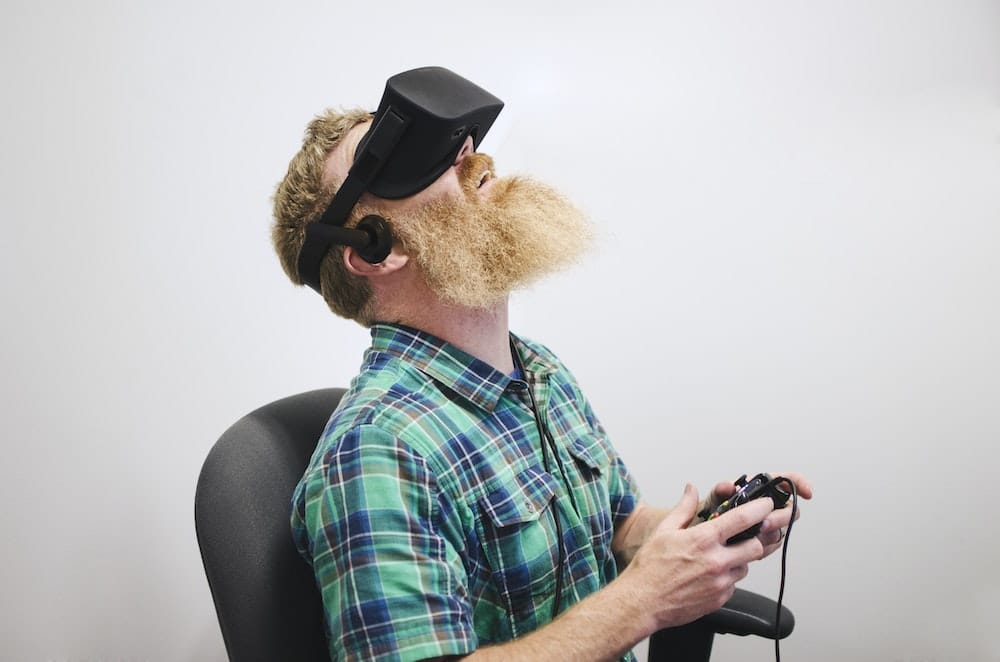In the sphere of real estate, the landscape is constantly shifting due to emerging technologies. One such transformative technology is Virtual Reality (VR), a tool that has begun to revolutionize how properties are marketed and sold. The virtual realm has opened up an avenue for potential buyers to experience, explore and engage with properties in a way that was unimaginable a few years ago. This article will delve into how you can harness VR to create immersive experiences, drive customer engagement, and ultimately, enhance your real estate sales.
The Rise of Virtual Reality in Real Estate
Virtual Reality, once a concept confined to the world of science fiction, is now a prevalent part of our day-to-day life. This technology is seeping into various sectors, including real estate, transforming traditional practices. Despite its relatively recent arrival in the sector, VR has quickly become an indispensable tool for real estate businesses.
Also read : What Are the Key Considerations for Constructing High-Density Affordable Housing?
Unlike conventional methods of property showcase, VR allows potential buyers to explore properties virtually from the comfort of their own homes, saving both time and resources. They can walk through every room of a property, experience its ambiance, and visualize how their future life could unfold there. This technology provides an immersive experience, enabling users to feel as if they are physically present within the property, even if it is on the other side of the world.
Benefits of Using VR in Real Estate Marketing
The integration of VR in real estate marketing offers a myriad of benefits that enhance the overall experience for both you, as real estate professionals, and your potential clients. It offers an innovative method of showcasing properties, which can help your business stand out in an increasingly competitive market.
Also read : What Are the Financial Considerations When Developing Real Estate Near Transit Hubs?
Visualizing the potential of a property is a significant factor in a buyer’s decision-making process. Using VR, you can offer 3D tours of the listed properties, allowing potential buyers to explore every nook and cranny at their own pace. This not only creates a highly interactive experience for the buyers but also instills a sense of ownership, increasing the chances of a successful sale.
Moreover, VR can also help you reach a wider audience. Prospective buyers across the globe can visit your properties virtually, eliminating geographical constraints. This significantly broadens your customer base, opening up opportunities for international sales.
How to Implement VR in Your Real Estate Business?
The implementation of VR in your real estate business can seem like a daunting task. However, with the right guidance and resources, you can navigate this process smoothly. The first step is to decide on the type of VR experience you want to provide. The two major types of VR experiences are 3D virtual tours and VR property staging.
3D virtual tours enable users to navigate through a property virtually. High-quality 360-degree images of the property are stitched together to create a seamless, immersive experience. The viewers can explore each room, look in any direction, and even zoom in on specific details.
VR property staging, on the other hand, allows potential buyers to visualize the property with different interior designs. This can be incredibly beneficial for properties under construction or for empty properties. Buyers can see how the property would look with different furniture, colors, and lighting, assisting them in visualizing their life in the property.
Enhancing Customer Engagement with VR
Customer engagement is essential for any business, and the real estate sector is no exception. With VR, you have the opportunity to engage your customers in a way that was not previously possible.
When customers use VR to explore properties, they interact with the property on a much deeper level. They are actively involved in the exploration process, rather than passively viewing images or videos. This active engagement generates a stronger emotional connection with the property, increasing the likelihood of them making a purchase.
Furthermore, the novelty and excitement of VR can also serve as a powerful marketing tool. Offering VR tours can differentiate your business from competitors, attracting more potential buyers. High-quality VR experiences can also encourage customers to share their experiences with others, generating word-of-mouth publicity for your business.
The power of VR in real estate is undeniable. It offers a unique, immersive experience that can transform the way properties are marketed and sold. By integrating VR into your business, you can offer a remarkable service to your clients, setting your business apart in the highly competitive real estate market.
Exploring VR Use Cases in Real Estate
Virtual Reality has found its place in the real estate industry in various forms. Each use case is targeted at making the customers’ journey smoother and more interactive, thereby boosting the chances of a successful sale. Here, we highlight two primary use cases of VR in real estate: VR in property viewings and VR in property development.
VR in property viewings is perhaps the most prevalent application of this technology in real estate. By creating virtual tours, estate agents enable potential buyers to explore properties from anywhere in the world, at any time. Whether it’s an apartment in the heart of the city or a villa on the beach, buyers explore these properties in an immersive manner, which is much more engaging than looking at static pictures.
Additionally, VR allows for virtual staging of properties. This is especially beneficial in situations where the property is under construction or when it’s difficult to physically stage the property. With VR, potential buyers can visualize different setups and designs in the property, giving them a realistic idea of what living there could look like.
The second significant application is VR in property development. Real estate developers can leverage VR to provide potential customers with a realistic representation of a project even before it’s completed. They can take the customers on a real-time tour of the proposed project, showcasing the layout, design, and amenities in detail. This not only helps customers make informed decisions but also enhances their confidence in the project.
The Future of VR in Real Estate
As we move further into the digital age, the applications of VR in the real estate industry are bound to increase. The technology offers estate agents a cost-effective way to showcase properties, engage potential buyers more effectively, and ultimately close more sales.
Moving forward, we can expect to see the adoption of augmented reality (AR) along with VR. This combination could allow buyers to place their own furniture within a virtual space, further personalizing the property viewing experience. The blend of VR and AR could also help architects and designers to create and adjust their designs in real-time, saving both time and resources.
Moreover, with the growing influence of social media and app development, VR experiences could soon be integrated into popular platforms, making property tours just a click away.
In conclusion, the real estate industry is on the verge of a digital transformation, and VR is at the helm of this change. With its ability to create immersive experiences, engage customers on a deeper level, and offer cost-effective solutions, VR is set to redefine the real estate landscape. As a real estate professional, embracing VR could be the key to staying ahead in the competitive market. The future of real estate is virtual, and it’s time to be a part of it.











